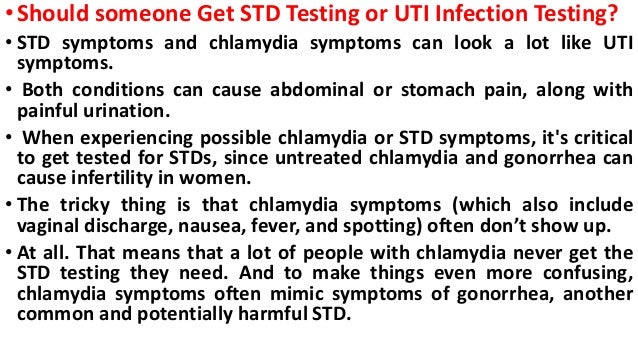

1 Approximately 1.8 million cases of chlamydia and more than 600 000 cases of gonorrhea were reported to the Centers for Disease Control and Prevention (CDC) in 2019.

(I statement)Ĭhlamydia and gonorrhea are among the most common sexually transmitted infections (STIs) in the US. (B recommendation) The USPSTF concludes that the current evidence is insufficient to assess the balance of benefits and harms of screening for chlamydia and gonorrhea in men. (B recommendation) The USPSTF recommends screening for gonorrhea in all sexually active women 24 years or younger and in women 25 years or older who are at increased risk for infection.

Recommendation The USPSTF recommends screening for chlamydia in all sexually active women 24 years or younger and in women 25 years or older who are at increased risk for infection. The USPSTF concludes that the current evidence is insufficient to assess the balance of benefits and harms of screening for chlamydia and gonorrhea in men. The USPSTF concludes with moderate certainty that screening for gonorrhea in all sexually active women 24 years or younger and in women 25 years or older who are at increased risk for infection has moderate net benefit. Population Asymptomatic, sexually active adolescents and adults, including pregnant persons.Įvidence Assessment The USPSTF concludes with moderate certainty that screening for chlamydia in all sexually active women 24 years or younger and in women 25 years or older who are at increased risk for infection has moderate net benefit.
CHLAMYDIA VS GONORRHEA SYMPTOMS UPDATE
Objective To update its 2014 recommendation, the US Preventive Services Task Force (USPSTF) commissioned a systematic review to evaluate the benefits and harms of screening for chlamydia and gonorrhea in sexually active adolescents and adults, including pregnant persons. Both types of infection can increase risk of acquiring or transmitting HIV. Infection in men may lead to urethritis and epididymitis. Newborns of pregnant persons with untreated infection may develop neonatal chlamydial pneumonia or gonococcal or chlamydial ophthalmia. Chlamydial and gonococcal infections in women are usually asymptomatic and may lead to pelvic inflammatory disease and its associated complications. Infection rates are highest among adolescents and young adults of both sexes. Importance Chlamydia and gonorrhea are among the most common sexually transmitted infections in the US.


 0 kommentar(er)
0 kommentar(er)
